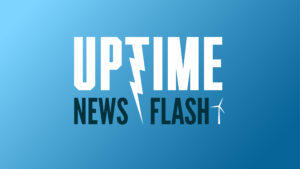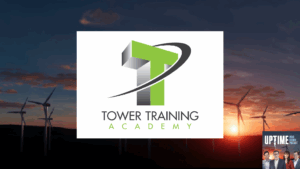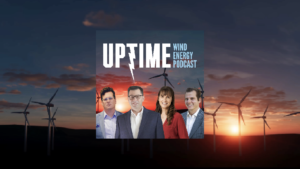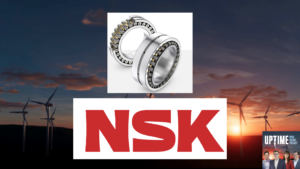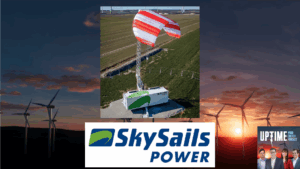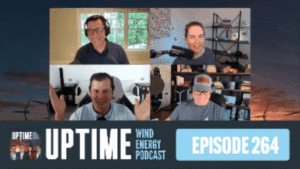Podcast: Play in new window | Download
This week, Siemens Gamesa’s idea which protects delicate items on the blade while doing lifts, Integrated Power Services’ replaceable yaw break sleeve, and a new way to keep ants away from your picnic.

Sign up now for Uptime Tech News, our weekly email update on all things wind technology. This episode is sponsored by Weather Guard Lightning Tech. Learn more about Weather Guard’s StrikeTape Wind Turbine LPS retrofit. Follow the show on Facebook, YouTube, Twitter, Linkedin and visit Weather Guard on the web. And subscribe to Rosemary Barnes’ YouTube channel here. Have a question we can answer on the show? Email us!
Pardalote Consulting – https://www.pardaloteconsulting.com
Weather Guard Lightning Tech – www.weatherguardwind.com
Intelstor – https://www.intelstor.com
Allen Hall: Welcome to Power Up, the Uptime podcast focused on the new hot off the press technology that can change the world. Follow along with me, Allen Hall, and IntelStor’s Phil Totaro, as we discuss the weird, the wild, and the game changing ideas that will charge your energy future.
All right, guys, our first patent this week is something kind of unique from Siemens Gamesa. And it tries to answer a problem that all winter blade lifting Apparatus have, especially when there are vortex generators or gurney flaps or trailing edge serrations, which is during the lift, those items tend to get plucked off and it makes the operator not happy.
It makes everybody not happy because somebody’s got to get up there and replace them, generally speaking. So Siemens, Gamesa has come up with a little bit of a handling tool to avoid this damage, which is kind of like a pillow like device some sort of plastic, multiple plastic. That encapsulates these add ons so they don’t get broken during the lift.
Now, Phil, this seems like a, actually a decent moneymaker because other operators, wind turbine OEMs have the same problem. If you look on the ground after a lift. Usually, you can see those little pieces, those injection molded pieces laying on the ground there.
Philip Totaro: Shards of things stripped off.
Yeah, so this one’s really interesting, and I should admit that I’m not actually sure if Siemens Gamesa is using this with any of the EPC contractors yet. However the reason that it’s been developed, as you mentioned, Alan, is that it’s, it’s there to try and help prevent add ons from being kind of sheared off as, if the blade is being lifted in the saddle and there’s either some kind of, gust or something, some kind of torsion that, that occurs that might shift the blade in the saddle in particular.
That can cause a lot of these incidents where, where bits get sheared off. Where this comes in handy is it’s basically padding on the straps that is made with some kind of, gelatinous something. They don’t, I mean, they, they go into a bit of detail on what these materials could be in the patent.
So you can, I guess, use your imagination, but it’s, it’s basically Relatively compliant. Jelly like structure. I guess that’s the best non technical way to explain it. You know that it’ll basically accommodate the deformation when it goes up against the blade surface that has the vortex generators or whatever poking out of it.
So you could use this for, for riblets, you could use this for, for any little add ons you want. So I, I think from that perspective it’s, it’s pretty clever. We at Intel Store will dig more into whether or not this is being used commercially and, make that a part of our our technical analysis on inventions like this.
Joel Saxum: I think this one makes absolute sense out in the field, right? It’s not too complicated. It’s something that can be implemented pretty easily. Thank you. And in my mind, I’m already thinking like, Oh, this might actually give the lifting company lifting the crane or however you’re lifting a blade a little bit of a better grip on on the blade itself as well So sometimes there is slippage in that and that’s not good, right?
There’s specific lifting points on the blade that need to be adhered to to avoid structural damage and and and or trailing edge damage These kind of things can we see this in inspections all the time on brand new fully commissioned wind farms where there’s a crushed trailing edge or, or there’s a mark in the, somewhere in the shell because something slipped or was grabbed wrong.
And these may avoid that by giving it a little bit more biting power, right? It’s like something compliant that can actually squeeze on the blade a little bit. But on the other side of that as well, if you’re installing a new blades and you break off of some VG panels, if I’m the asset owner. Well, I want those fixed before I take this asset over.
So you’re going to get someone up there on ropes or in a platform to fix them. It’s not just gluing it on. That’s gonna cost, two, three, four grand to get a crew up there, come down, fix the things, all that. So there’s a lot of costs that this thing can avoid as well. So I think it’s a great, great innovation.
Philip Totaro: And keep in mind, too, that this is an invention by the OEMs, which you would kind of assume You know, they’re the ones most kind of keenly impacted by this, particularly if they are the ones that are liable until the, the turbine’s commissioned. But the fact that it’s a patent around kind of EPC and, and construction, it gives Siemens Gamesa the opportunity to potentially partner with EPC contractors and license this technology to them.
So you could see this being part of a commercial offering at different EPC contractors that they may have obtained through a license by Siemens Gamesa, so that’s, that’s potentially extra revenue for them. And one reason why you need to think a little holistically when you’re, when you’re contemplating the inventions you come up with and the patents you actually go get.
It’s not just about protecting your ability to use the technology. There may be licensing opportunities for this.
Allen Hall: Our second invention is related to yaw brakes. And I think of yaw brakes as one of the most difficult pieces of a turbine to keep healthy. It’s very similar to the way a brake rotor works in a car, or a Formula 1 or a NASCAR.
There’s a lot of heat and energy trying to be absorbed by this brake. And on some wind turbines, it’s all hydraulic, sometimes the housing that holds this brake mechanism tends to crack because of all the stresses that are there. Well, to replace that housing, unlike a car where you pull the wheel off, on a turbine, you have to lift off the whole nacelle.
And that can get really expensive if you have to do it, while the people down at Integrated Power Services have come up with a build replaceable yaw break sleeve and Phil this this idea I haven’t seen implemented. It must be out in service somewhere It starts to make a lot of sense because those parts break.
And that’s one thing about integrated power services. They are trying to make turbines easier to maintain.
Philip Totaro: Indeed. And so the fact that this is a, a field replaceable element now versus potentially, as you just described, Alan, not a field replaceable element that may OEM. That’s something where it, it gives IPS.
a particular kind of leg up on, potentially supplying this as an aftermarket part to asset owners or operators that are kind of feeling the pain. Whoever wants to, have a crane call out just because you’ve got some kind of, yaw break element stuck and, you can’t get down in there older turbine designs need technology like this where they can, they can leverage the fact that this thing has its own separate threaded insert and you can kind of twist it on, twist it off without having to remove the whole nacelle.
That’s advantageous, I think.
Joel Saxum: Yeah, when I think about hydraulics and replacing things, my mind immediately goes to really basic stuff, right? I’m thinking excavators or skid steers or something where it’s really easy to get at. You can grab a sledgehammer, pop some pins, pull them out, rebuild a hydraulic cylinder, put it back in, boom, you’re on your way.
Well, those aren’t 80 or 100 meters up in the air and they don’t have a 70, 100 ton nacelle sitting on top of them. So something like this is a very much needed innovation within the marketplace. And I would, to be honest with you, we just, we just talked about the idea of, an OEM putting a patent out where some people can license it from them.
I would love to see an OEM license this patent from IPS to build into their next generation turbines to make them more field
Allen Hall: serviceable.
Our fun patent of the week is an electrified tablecloth. And, and Phil, the electrification of a tablecloth, I’m sure has been a medieval device from hundreds of years ago, because, you know what?
There are some people you just don’t want to have to have dinner with. However, in this case, it’s a little bit different. They are looking to stop the insects, the ants in particular, when you’re out having a nice picnic from joining you and crawling up on the table. So they’ve created this electrified area perimeter, so to speak, in which when the insect crawls over it, it receives a small electrical shock.
However, the obvious question is, well, you don’t want to shock someone you want to have a nice lunch with. You want to make sure they’re not hurt. The voltage is low enough where it doesn’t shock humans. But high enough where the insects are repelled. There’s gotta be other applications of this beyond the tablecloth, right?
Joel Saxum: Potentially. What needs to happen next is this needs to be Bluetooth enabled. And if you’re having a bad date, you can just look at your phone and BZZZT end that date real quick.
Philip Totaro: I you know what? I don’t even know where to go from there. I the other applications for this technology, I mean, certainly, well, let’s, let’s also talk about the fact that you, you definitely want the voltage to be at a particular level so that, like, kids or animals.
I mean, what happens when the dog comes and starts begging for food next to the tablecloth and it’s electrified? I mean, you got to make sure that it’s only going to only going to deal with insects. So this is one where, you know, what we normally talk about, these, these wacky patents every week and, and some of them are just kind of preposterous.
Like, why’d they ever propose it as the inventor? Why did the patent office ever allow it? We get into a lot of those debates all the time amongst the engineering world. This one’s actually Joel’s extrapolations notwithstanding. This is actually a fairly practical idea solving a real world problem.
So I have to actually come down on the the favorable side of, of this one this, this week.
Allen Hall: It’s going to get exciting when it rains out there at your picnic. Everybody’s going to get electrified, Phil.





